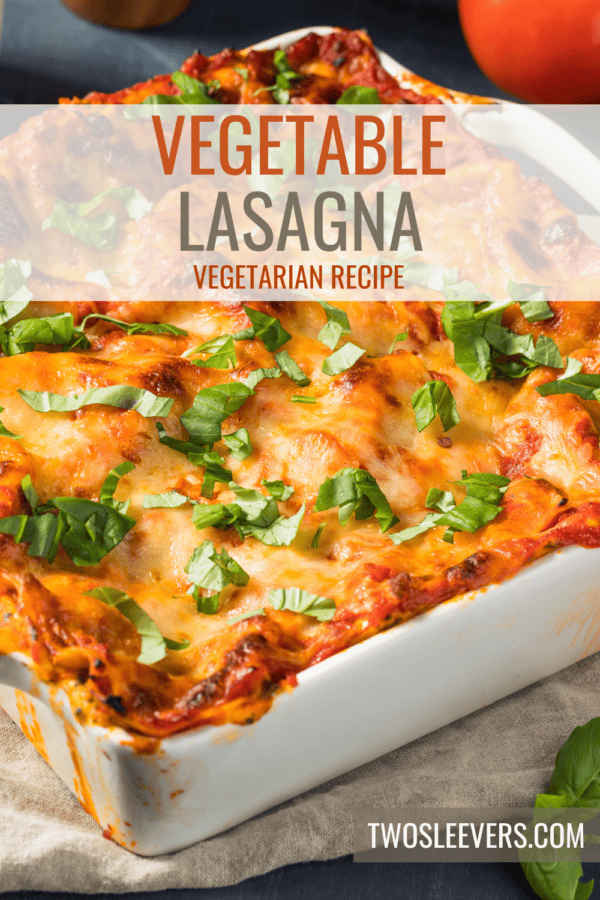Why It’ll Make You Love Veggies
Vegetarian.Delicious.Versatile.
What Vegetables Go In Lasagna?
Vegetable lasagna offers a wonderful opportunity to incorporate a variety of colorful and nutritious vegetables. While the choice of vegetables is ultimately up to personal preference, here are some popular options commonly used in vegetable lasagna:
Zucchini- Zucchini adds a mild flavor and a pleasant texture to the lasagna. It cooks relatively quickly and pairs well with other vegetables.Yellow Squash- Yellow squash is similar to zucchini in terms of flavor and texture. Including both zucchini and yellow squash adds visual appeal to the dish.Eggplant- Eggplant offers a rich and meaty texture when cooked. Slicing and roasting the eggplant beforehand helps soften it and develop its unique flavor.Spinach- Spinach is a versatile leafy green that wilts down when cooked. It adds a pop of vibrant green color and a mild earthy taste to the lasagna.Mushrooms- Varieties such as cremini, button, or portobello mushrooms lend an earthy flavor and a meaty texture to the lasagna. Sautéing mushrooms before incorporating them into the dish enhances their flavor.Onions- Onions are a staple in many savory dishes and provide a savory and aromatic base flavor. They can be diced and sautéed before adding to the lasagna.Tomatoes- Fresh or canned diced tomatoes are commonly used in vegetable lasagna. They contribute acidity and moisture to the dish. Consider removing excess seeds and liquid from fresh tomatoes to prevent the lasagna from becoming too watery.Carrots- Carrots offer a slightly sweet taste and add a pop of orange color to the dish. Grate or thinly slice them to ensure they cook evenly with other vegetables.Broccoli or Cauliflower- These cruciferous vegetables bring a hearty and slightly crunchy texture to the lasagna. Chop them into small florets and blanch them briefly before adding them to the layers.
How Do You Keep Vegetable Lasagna From Being Watery?
Vegetables like zucchini, eggplant, and tomatoes release water when cooked. To minimize their contribution to excess moisture, consider salting or blotting the vegetables before cooking. Sprinkle them with a pinch of salt and let them sit for a few minutes to draw out some moisture. Blot the excess moisture with paper towels before adding them to the lasagna. Since you’re using ricotta and other cheeses with high moisture content, make sure they are not too wet. Drain any excess liquid before incorporating them into the dish.
Ingredients
Lasagna NoodlesOlive OilOnionGarlicZucchiniYellow SquashEggplantMushroomsSpinachDiced TomatoesTomato PasteItalian SeasoningSalt and PepperRicotta CheeseEggParmesan CheeseMozzarella Cheese
How To Make Vegetable Lasagna
Tips And Tricks
Choose Quality Marinara Sauce. If you’re using premade marinara sauce, select a high-quality brand with good flavor. Taste and adjust the sauce to your liking by adding additional herbs or spices if desired. This helps elevate the overall taste of the lasagna.Allow for Resting Time. Once the lasagna is baked, allow it to rest for about 10-15 minutes before serving. This helps the lasagna set and makes it easier to slice and serve.Adjust Baking Time and Temperature. Follow the recommended baking time and temperature in the recipe, but keep in mind that ovens may vary. Keep an eye on the lasagna as it bakes and adjust the time or temperature if necessary to ensure it cooks evenly and doesn’t become overly browned.
Remember, cooking is a creative process, so feel free to experiment and make adjustments based on your preferences. With these tips and tricks, you’ll be on your way to creating a delicious and flavorful vegetable lasagna that will impress your family and friends.
Variations
Roasted Vegetable Lasagna- Instead of sautéing the vegetables, roast them in the oven before layering them into the lasagna. Roasting brings out the natural sweetness and intensifies the flavors of the vegetables. Drizzle the vegetables with olive oil, sprinkle with salt, pepper, and herbs, and roast until tender and slightly caramelized.Mediterranean-Inspired Lasagna- Give your lasagna a Mediterranean twist by adding ingredients like roasted red peppers, sun-dried tomatoes, Kalamata olives, and crumbled feta cheese. These ingredients infuse the dish with tangy and savory flavors that perfectly complement the vegetables.Vegan Vegetable Lasagna- Create a vegan-friendly version by omitting the dairy products and replacing them with plant-based alternatives. Use dairy-free ricotta or tofu ricotta for the cheese layer, and opt for a vegan-friendly marinara sauce. You can also experiment with plant-based cheese substitutes, such as vegan mozzarella or nutritional yeast.
Feel free to mix and match these variations or create your own unique combinations based on your preferences. The versatility of vegetable lasagna allows for endless experimentation and creativity.
What To Serve With It
Garlic Bread or Breadsticks- Serve warm, crusty garlic bread or breadsticks on the side. The soft bread and garlic flavors perfectly complement the flavors of the lasagna.Mixed Green Salad- Prepare a fresh mixed green salad with a variety of lettuces, cherry tomatoes, cucumbers, and your choice of additional vegetables. Drizzle it with a tangy vinaigrette dressing for a refreshing and crisp side dish.Sautéed Greens- Cook a side of sautéed greens like Swiss chard, kale, or spinach. Sauté them with garlic and olive oil for added flavor and nutrition. The greens provide a healthy and vibrant component to balance the richness of the lasagna.Red Wine- Consider serving a bottle of red wine such as a Chianti, Sangiovese, or Cabernet Sauvignon. The rich flavors and tannins of the red wine complement the hearty flavors of the lasagna.
Remember to consider your guests’ preferences and dietary restrictions when selecting accompaniments. The goal is to create a well-rounded and satisfying meal by offering a combination of flavors, textures, and colors. Enjoy the process of curating a memorable dining experience alongside your delicious vegetable lasagna.
How Long Does It Last?
When properly stored, vegetable lasagna can last for a few days in the refrigerator. Here are some guidelines for storing and enjoying vegetable lasagna:
Can You Freeze It?
If you want to extend the shelf life of your vegetable lasagna, you can freeze it. Here are a few tips on how to keep it tasting delicious when freezing it for later:
After baking, allow the lasagna to cool completely before freezing.Wrap individual portions or the entire dish tightly with plastic wrap and then with aluminum foil, or place it in a freezer-safe container or freezer bags.Make sure it is well-sealed to prevent freezer burn.Vegetable lasagna can be frozen for up to 2 to 3 months.
To thaw a frozen vegetable lasagna, transfer it from the freezer to the refrigerator and let it thaw overnight. Once thawed, you can reheat the lasagna in a preheated oven at 350F for about 20-25 minutes or until heated through.
More Lasagna Variations
Instant Pot LasagnaKeto LasagnaSkillet Lasagna Lasagna Roll UpsZucchini Roll UpsMexican LasagnaChicken Lasagna
Pin It!
If you love this Vegetable Lasagna as much as we do, make sure you share it with your friends on Facebook and Instagram so they can try it too! Don’t forget to Pin it so you can make it again soon.






